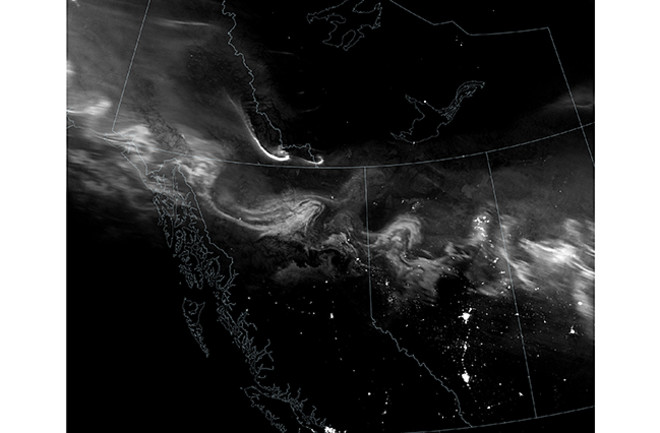The Sun has become increasingly obstreperous lately, and the results here on Earth have been nothing short of dazzling – but also disruptive.
"A flurry of solar activity in mid-December 2023 sent energized particles crashing into Earth’s magnetosphere, producing undulating auroras across northern latitudes of our planet," NASA's Earth Observatory reports. Those Northern Lights have been spied by a number of polar orbiting spacecraft, including the SUOMI NPP satellite, which captured the image above on Dec. 17, 2023.
Here's another dazzling image from SUOMI NPP, this one acquired on Dec. 14:
As the Sun has been heading toward a peak of solar cycle 25, aurora-producing activity has been on the rise. This has included solar flares — large eruptions of electromagnetic radiation lasting minutes to hours and traveling outward at the speed of light.
NOAA's Space Weather Prediction Center called the Dec. 14 solar flare seen in the animation above an "amazing Event — likely one of the largest solar radio events ever recorded."
As it reached our atmosphere, the blast of X-rays and ultraviolet light — the strongest flare of this solar cycle — stripped atoms of their electrons. In turn, this ionization weakened radio waves coursing through the atmosphere. The result: disruption of some radio communications between the ground and and aircraft, as reported by multiple National Weather Service Center units at FAA facilities in the United States.
Giant Solar Explosions Hurl Material Toward Earth
Solar flares often are quickly followed by large explosions of plasma and magnetic energy from the outermost part of the Sun's atmosphere. These coronal mass ejections, or CMEs, can hurl billions of tons of coronal material outward at nearly 2,000 miles per hour, reaching Earth in as little as 15 to 18 hours.
This is what happened after the solar flare of Dec. 14. Several coronal mass ejections appear to have hit Earth, triggering beautiful auroral displays, including the ones over Canada seen in the image at the top of this article, according to NASA.
Energetic events like this rise toward a peak as solar maximum is reached. At the same time, some parts of the Sun's magnetic field weaken, and the field lines open out into space. When this happens, one or more huge dark spots may appear in the Sun's corona (as seen in extreme ultraviolet and soft x-ray images).
They look dark because they're cooler and less dense than surrounding areas. The open magnetic field lines allow a stream of protons and electrons to flow more readily outward than from other regions. These solar winds blowing from coronal holes reach speeds of up to 1,790,000 miles hour.
Enhanced solar winds blowing from the coronal hole seen in the animation above are believed to have triggered auroral displays here on Earth that were seen by orbiting polar spacecraft.
Each solar cycle lasts about 11 years, and this one seems to be building faster to a bigger crescendo than previously forecast, according to NOAA's Space Weather Prediction Center. The updated prediction now calls for Solar Cycle 25 to peak between January and October of 2024.

